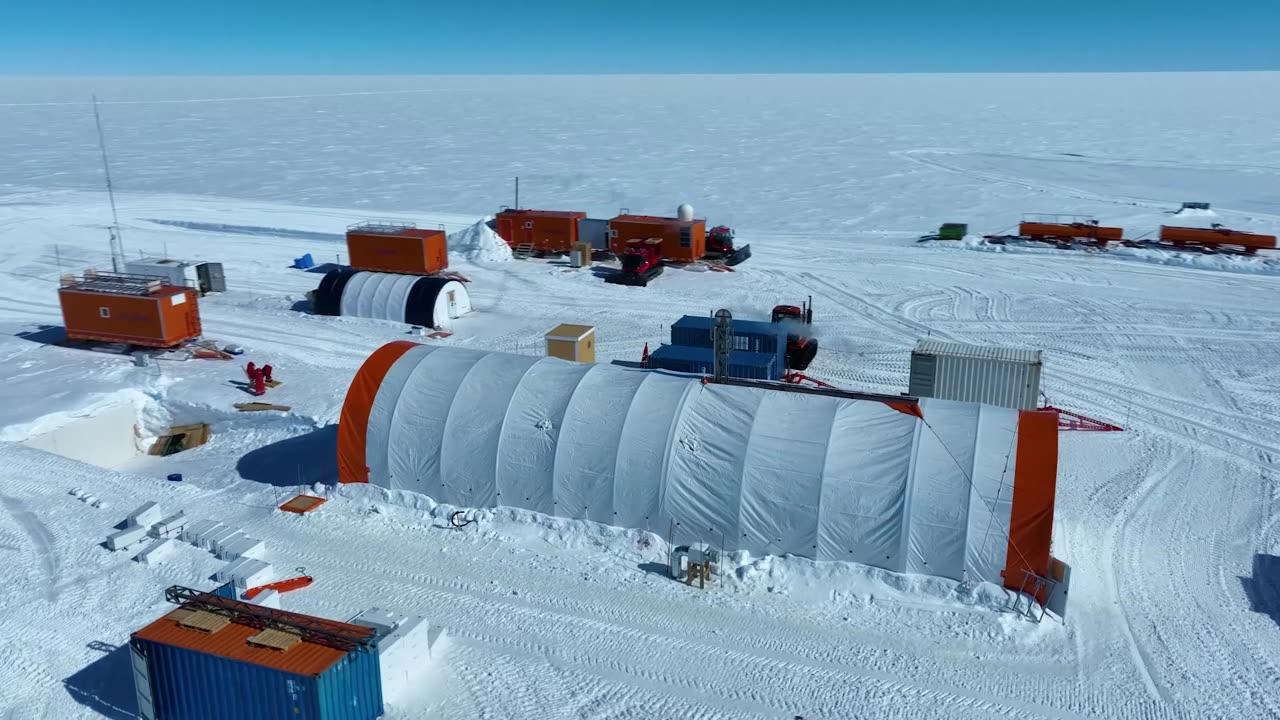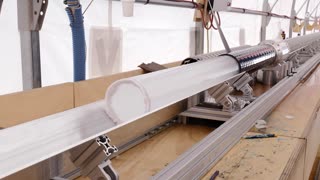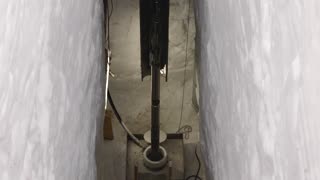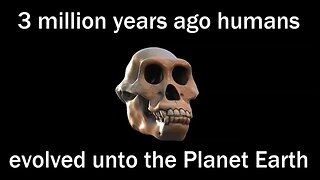Premium Only Content

ICE AGE: Research Team Aims To Drill Ice Sample That Is 1.5 Million Years Old
An international team of researchers has collected 50,000-year-old ice samples from a depth of 2,651 feet in Antarctica.
The extracted ice core samples will reportedly aid the team of experts go about 1.5 million years back in time and reconstruct past temperatures and greenhouse gas concentrations.
The Beyond EPICA - Oldest Ice project campaign took place at an area near Dome C, East Antarctica. from November 2022 to January 2023.
Additionally, the project was reportedly funded with EUR 11 million (GBP 9,8 million) by the European Commission in 2019, and is estimated to last for seven years.
Upon arrival, the team reportedly faced opening operations difficulties due to severe weather conditions, but after organising the work in two shifts drilling activities kept going for 16 hours per day continuously.
After having installed the Alfred Wegener Institute Helmholtz Centre for Polar and Marine Research (AWI)'s deep ice drilling system, they then fine-tuned it to continue the drilling operations from the previous campaign.
Meanwhile, they used the Danish drilling system as a backup to continue ice core extraction operations when facing issues with the AWI system.
The scientists' goal is to reach a depth of 2,700 metres (8,858 feet) which represents the thickness of the ice sheet underneath Little Dome C.
Dome C, also known as Dome Circe, Dome Charlie or Dome Concordia, is located at Antarctica at an elevation of 3,233 metres (10,607 feet) above sea level, and is one of several summits or 'domes' of the Antarctic Ice Sheet.
Located about 34 kilometres (21 miles) away from the French-Italian station Concordia, Dome C is considered one of the most extreme places on Earth.
Reports claimed that the area surrounding Dome C is thought to be one of the most promising targets for recovering a continuous ice-core record spanning more than a million years.
Project Coordinator and Director of the Institute of Polar Sciences of the Italian National Research Council Carlo Barbante said in a statement obtained by Newsflash: "This season has been intense but brought amazing results thanks to the team's gigantic efforts.
"They worked tirelessly for two months at the Little Dome C camp.
"They first tested the equipment, and then progressed down to the remarkable depth of 808 metres [2,651 feet] and collected high quality ice cores.
"This will be the starting point for the next Beyond EPICA drilling season."
In the last days of work, after the drill barres were tested, the team isolated a single 4.5-metre-long (14.8 feet) ice core which is the longest ever core to be drilled by a European team.
Chief Scientist Rob Mulvaney said: "This is a significant achievement for the AWI drill system: this is the longest core ever drilled by a European project.
"Its significance lies in the fact that at greater depths, where the time to winch down and up the borehole increases incrementally, being able to recover longer cores in each run means that we progress faster with the drilling, and should cut the time needed to reach bedrock, and the Oldest Ice."
Barbante said: "We believe this ice core will give us information on the past's climate and the greenhouse gases in the atmosphere during the Mid-Pleistocene Transition (MPT), which happened between 900,000 and 1.2 million years ago.
"During this transition, climate periodicity between ice ages changed from 41,000 to 100,000 years: the reason why this happened is the mystery we hope to solve."
-
 0:58
0:58
Viral Tab News
1 year agoYoung Seal Almost Throttled By Plastic Returned To The Wild
189 -
 0:09
0:09
Viral Tab News
1 year agoICE AGE: Research Team Aims To Drill Ice Sample That Is 1.5 Million Years Old
101 -
 0:24
0:24
Viral Tab News
1 year agoICE AGE: Research Team Aims To Drill Ice Sample That Is 1.5 Million Years Old
111 -
 0:25
0:25
Viral Tab News
1 year agoICE AGE: Research Team Aims To Drill Ice Sample That Is 1.5 Million Years Old
137 -
 0:24
0:24
terahdangbeatz85
1 year agoCooking a drill beat with a soulful sample
3 -
 0:29
0:29
mklotsamklotsagg
2 years agobird looks 4.8 million years old
30 -
 0:26
0:26
RedpillUSAPatriots
2 years ago$1 million to Research Vax Misinformation
1642 -
 6:45
6:45
Last World News Channel
1 year agoTwitter will lose 30 million monthly users over next 2 years, market research firm predicts
3 -
 1:06
1:06
Remixer
1 year ago3 million years ago humans evolved unto the Planet Earth
11 -
 3:18:57
3:18:57
Rance's Gaming Corner
6 hours ago"Happy Thanksgiving" First time Sweets and I play Car Soccer!!!
23.7K1